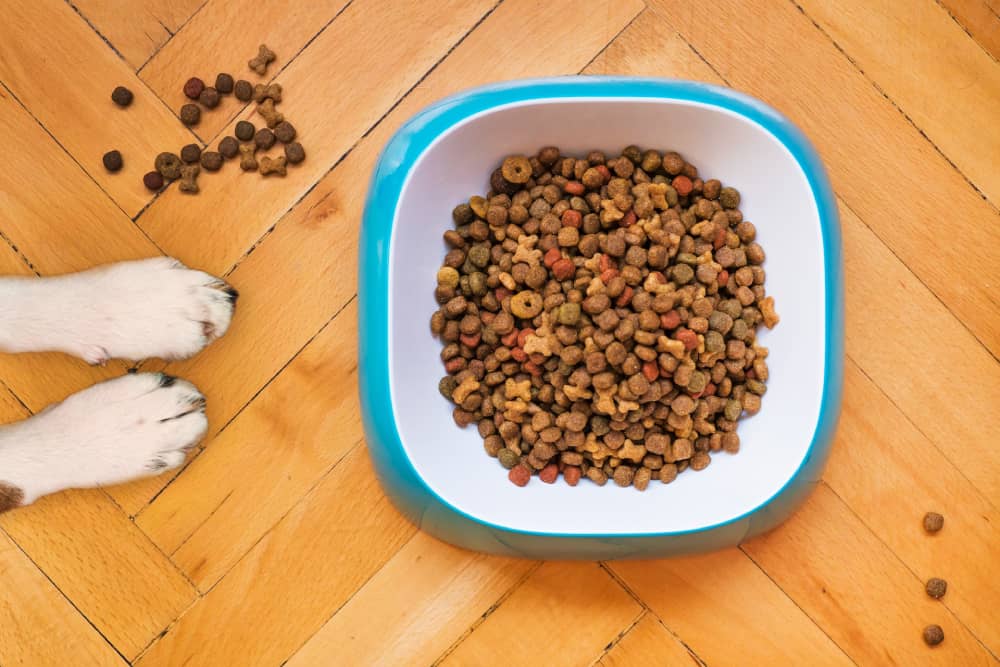Fueling the Pedigree: Finding the Right Dog Food for Purebred Canines
Having to decide between a vast array of dog food choices can be overwhelming. However, there’s no need to feel bad because even the most experienced dog owners can find the process tedious, especially when it comes to purebred canines. So, how do you determine the best food for your purebred?
This article contains all there is to know about choosing the right food for your purebred dog and all the nutrition they need. Also, we will discuss why raw dog food might just be the thing your pet has been waiting for.

Importance of Nutrition for Purebred Canines
Nutritional Requirements for Purebreds
There are various breeds of purebred dogs, with each breed possessing unique physical characteristics and traits. Due to these distinct features, each breed of canine has varying nutritional requirements.
For example, a large dog like the Great Dane has completely different nutritional needs from a smaller canine like the Papillon.
Therefore, you need to consider your dog’s breed, size, age, health concerns, and activity level when deciding on the food.
Granted, it might be tempting to select any product and start using it, but deciphering the best brand for your dog can significantly improve their overall health and happiness.
Remember, it’s best to consult with your veterinarian before making any significant changes to your dog’s diet. This is because a vet can offer valuable information regarding their dog’s health and breed-specific needs.
Effects of a Poor Diet

Similar to humans, an inadequate diet can result in various health concerns in dogs. Some common illnesses include diabetes, obesity, joint issues, and heart disease.
Hence, ensuring that you feed your dog the right balance of nutrients is vital to their health. This is especially important for purebreds, seeing as they are predisposed to breed-specific issues and therefore need a well-balanced diet.
Components of Quality Dog Food

Dog food might not be appealing to humans, but your dog loves it, and it contains all they require to stay healthy. Furthermore, quality dog foods undergo strict testing and are heavily regulated, so you have nothing to worry about.
Dogs are not strictly carnivores, so they can eat all sorts of ingredients. While their diet should mainly consist of meat, high-quality dog food should contain a variety of ingredients, such as grains, fruits, and vegetables that are suitable for your dog.
Understanding Types of Dog Food
When it comes to dog food, there are two types. You can either opt for commercial dog food or raw dog food. Either choice has its benefits and drawbacks. Let’s take an in-depth look at both types.
Commercial Dog Food
Commercial dog food is the most commonly used type. You can find it in various forms, such as canned, semi-moist, kibble, and others.
That said, the various types of commercial dog food differ in terms of quality. Some products contain helpful filler ingredients such as corn and wheat or less helpful ingredients such as artificial flavors, colors, and preservatives.
One of the benefits of commercial food is that it is much more convenient for owners, seeing as they have a longer shelf life than raw dog food.
Furthermore, commercial food is easier to use because you just need to use a measuring cup to measure the food and serve your dog. On the other hand, you would have to measure multiple raw foods properly before serving.
On the downside, commercial food does not taste as good as raw food, and your dog might not find it appetizing.
Raw Dog Food
Raw dog food allows you to take various approaches to your canine’s diet. The point of this type of feeding is to give your dog what they would typically eat in the wide.
Most contain uncooked food such as meat, fruits, vegetables, bones, dairy, grains, and other natural ingredients. Raw dog food usually have chicken and beef as the meat. But did you know that the Premium Raw Dog Food – Petzyo.com.au offers also has kangaroo meat? And kangaroo comes with an advantage: it remains a novel protein.
Raw dogs food, when sold, are either freeze-dried or frozen to help make them last longer. They are optimal because they have the perfect mix of minerals and vitamins. That said, you can choose to make your own by buying most of the raw ingredients at a grocery store.
A major reason why people opt for raw food is that this diet typically results in healthier skin, higher energy levels, shinier coats, and better dental health. In addition, this food option works best if your dog has allergies, so you can decide what you want to include in the mix.
However, raw food does have its drawbacks. For one, you are feeding your dog uncooked food; therefore, there is a possibility that the food contains bacteria. While this is not a problem for some dogs, others might get sick.
Additionally, said bacteria can remain in your dog’s stool which they might track back into your house. This can be a problem for people with compromised immune systems.
How to Switch to Raw Dog Food
Changing your dog’s diet to raw food is a gradual process. Start by combining small amounts of the new raw food with what they are currently eating.
As time goes on, you can increase the proportion of raw food. This process should take you about a week or two. Nevertheless, you should monitor your canine during this transition and look out for a change in appetite, stool consistency, or behavior.
Keep in mind that each dog is different, and while some dogs might benefit from raw food, others may not. Hence, it is advisable that you consult your vet regularly to ensure you are on the right track. Also Read – Tips and tricks for getting a picky dog to eat their food
Conclusion
Opting for the right food for your purebred canine does not have to be a tedious process. While it might seem overwhelming, it shouldn’t be.
As long as you understand your dog’s unique needs, consider and experiment with food options, and consult your veterinarian, you should get the hang of your dog’s dietary preference in no time.
Ultimately, you cannot go wrong choosing between commercial dog food or raw dog food. At the end of the day, all that matters is that you provide your furry friend with a balanced, nutritious diet to keep them healthy. Hopefully, you can do just that using information from this article.



